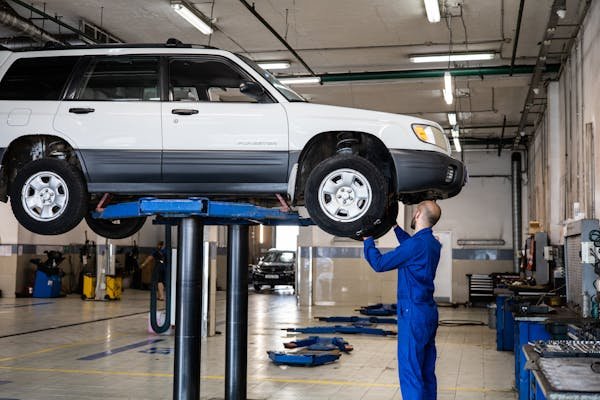Handing your child the keys to their first car is a big moment—equal parts exciting and nerve-wracking. While driver’s education covers the rules of the road, many young drivers head out without knowing the first thing about car maintenance. The last thing any parent wants is to get a panicked call about a dead battery, a blown tire, or a mysterious dashboard light that’s been ignored for weeks. Teaching basic car maintenance isn’t just about saving money on repairs—it’s about safety, reliability, and instilling a sense of responsibility. Let’s discuss some of the essential car maintenance lessons to pass on to the next generation of drivers.
Table Of Contents
Enhance Your Car Battery’s Lifespan
Few things are more frustrating than turning the key and getting nothing but silence. A dead battery can turn an ordinary day into a logistical nightmare, but with the right maintenance, it doesn’t have to happen unexpectedly. Young drivers should know how to enhance your car battery by following a few simple best practices.
One of the best ways to extend battery life is to drive regularly. Sitting idle for long periods drains the battery, so even if the car isn’t needed every day, it’s a good idea to take it for a short drive every few days to keep the charge up.
Another important lesson? Checking for corrosion on the battery terminals. Teaching kids how to safely clean off corrosion can help prevent unexpected failures.
Finally, make sure they understand the importance of turning off lights and all electronics when the engine isn’t running. Leaving headlights, interior lights, or even a phone charger plugged in overnight can drain a battery faster than they might think.
When Is It Time to Replace Tires, and How Can You Read the Size?
Tires are easy to ignore until there’s a problem, but they’re one of the most critical safety components of any car. Worn-out tires reduce traction, making it harder to stop quickly or maintain control in wet conditions. That’s why knowing how to read tire size and when to replace them is a must.
Every tire has a series of numbers and letters on its sidewall that indicate its width, aspect ratio, and diameter. Teaching kids how to decipher these markings ensures they’ll know exactly what to look for when it’s time for new tires.
Beyond size, young drivers should also know how to check for tread wear. The easiest trick? The penny test. Inserting a US penny into the tire tread with Lincoln’s head facing down can show how much life is left. If the top of his head is visible, it’s time for a replacement.
Tire pressure is another often-overlooked factor that affects both safety and fuel efficiency. Underinflated tires will wear out faster and lower gas mileage, while overinflated ones make the car harder to control. Teaching kids how to check and adjust tire pressure at a gas station or with a simple gauge at home can save them from unnecessary trouble down the road.
Why Is Oil So Important, and When Does It Need to Be Changed?
Oil is essential for an engine because it keeps all the moving parts running smoothly. Without it, friction builds up, causing excessive heat and eventually leading to serious damage. While most young drivers know they need oil changes, many don’t understand why they’re essential or how to check oil levels themselves. A quick demonstration of how to use the dipstick can go a long way. If the oil is too low or looks dark and sludgy, it’s time for fresh oil.
Understanding the recommended oil change interval for their specific vehicle is also key. While older advice suggested changing oil every 3,000 miles, modern cars can often go much longer—sometimes 5,000 to 7,500 miles. Teaching kids to follow their owner’s manual rather than relying on outdated recommendations will save them unnecessary trips to the shop.
What Should You Do When a Dashboard Warning Light Comes On?
Dashboard lights aren’t just decorative—they’re the car’s way of saying, “Hey, something’s wrong here!” But too many drivers ignore them until a minor issue turns into a costly repair. Teaching young drivers to pay attention to warning lights and understand what they mean is one of the best habits you can pass down.
Some lights, like the check engine light, don’t always indicate an immediate emergency, but they should never be ignored for long. Other warnings, like the oil pressure or battery light, require immediate action. Helping kids understand the difference between urgent and non-urgent warnings can prevent breakdowns and expensive repairs.
